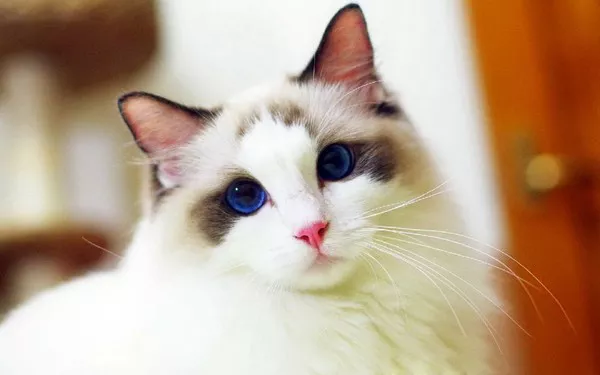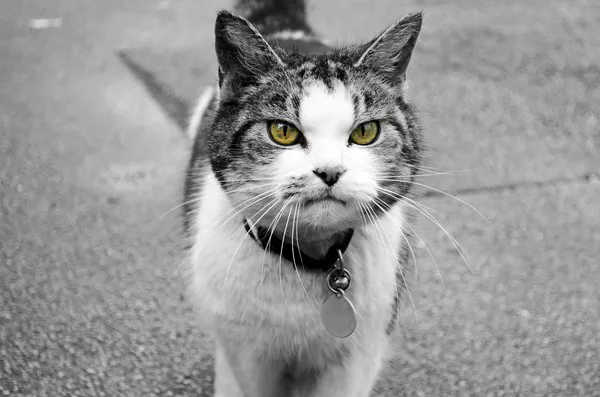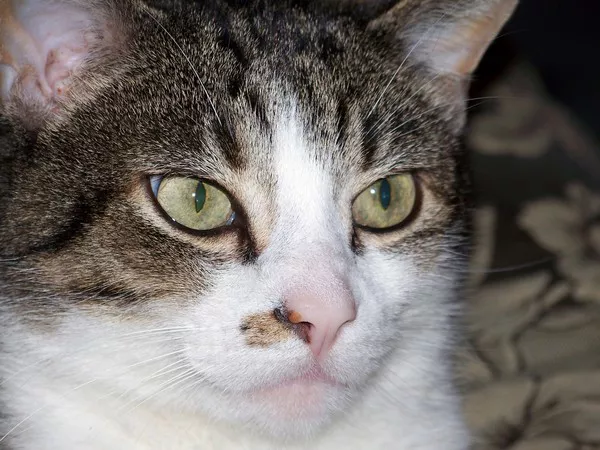Ragdoll cats, with their gentle demeanor and striking blue eyes, have captivated cat lovers worldwide. One common misconception about Ragdolls is their size, with many believing they are larger than “normal” cats. In this comprehensive article, we delve into the size variations among Ragdoll cats, debunk myths, explore breed characteristics, and provide insights into factors influencing their size. By the end, readers will have a clearer understanding of Ragdoll cat size and what to expect when welcoming one into their home.
Ragdoll Cats
Before delving into their size, it’s essential to understand the characteristics and origins of Ragdoll cats. Developed in the 1960s by breeder Ann Baker in California, Ragdolls are a relatively young breed known for their affectionate disposition and tendency to go limp when held, hence the name “Ragdoll.” They typically have striking blue eyes and a semi-long, plush coat with a variety of color patterns, including pointed, mitted, and bicolor.
Size Variations Among Ragdoll Cats
Ragdoll cats come in various sizes, just like any other domestic cat breed. While some individuals may be larger than average, others may fall within the typical size range for domestic cats. Factors such as genetics, lineage, diet, and overall health can influence a Ragdoll cat’s size and weight.
Debunking the Myth of Oversized Ragdolls
One common misconception about Ragdoll cats is that they are significantly larger than other domestic cat breeds. While Ragdolls are generally known for their substantial build and sturdy frame, they are not exceptionally large when compared to other breeds.
The perception of Ragdolls as oversized may stem from their semi-long fur, which can create an illusion of greater size, especially when they are fully fluffed. Additionally, Ragdolls have a tendency to reach their full size and weight more slowly than some other breeds, often continuing to grow and fill out until they are around four years old. This prolonged growth period may contribute to the perception of Ragdolls as larger cats.
Factors Influencing Ragdoll Cat Size
Several factors can influence the size and weight of Ragdoll cats, including:
Genetics: Like all living beings, cats inherit certain genetic traits from their parents, which can influence their size, build, and overall appearance. Ragdoll breeders carefully select breeding pairs to maintain breed standards while promoting healthy growth and development.
Lineage: The lineage of a Ragdoll cat can also play a role in determining its size. Cats from certain bloodlines may exhibit larger or smaller builds, depending on the characteristics of their ancestors.
Diet and Nutrition: Proper nutrition is crucial for supporting healthy growth and development in Ragdoll cats. A balanced diet that provides essential nutrients, vitamins, and minerals is essential for maintaining optimal body condition and promoting appropriate growth.
Health and Wellness: A cat’s overall health and wellness can affect its size and weight. Ragdoll cats that receive regular veterinary care, including preventive check-ups, vaccinations, and parasite control, are more likely to thrive and reach their full potential size.
Neutering/Spaying: The age at which a Ragdoll cat is spayed or neutered can also impact its size. Cats that are spayed or neutered before reaching sexual maturity may grow larger due to the absence of hormones that can influence growth and development.
Understanding the Typical Size of Ragdoll Cats
While Ragdoll cats can vary in size, there are general guidelines for what constitutes a typical adult Ragdoll cat size. Male Ragdolls typically weigh between 12 to 20 pounds, with some individuals reaching up to 25 pounds in exceptional cases. Female Ragdolls are generally smaller, weighing between 8 to 15 pounds on average.
It’s important to note that these weight ranges are just guidelines, and individual Ragdoll cats may fall outside of these ranges while still being healthy and well-proportioned. Ragdolls are known for their sturdy build and muscular physique, which contributes to their overall appearance of size and substance.
Tips for Maintaining a Healthy Ragdoll Cat
Regardless of size, all Ragdoll cats require proper care and attention to thrive. Here are some tips for maintaining the health and well-being of your Ragdoll cat:
Provide a Balanced Diet: Choose a high-quality cat food that meets the nutritional needs of your Ragdoll cat. Avoid overfeeding and monitor their weight to prevent obesity-related health issues.
Regular Veterinary Check-Ups: Schedule routine veterinary check-ups to monitor your Ragdoll cat’s health and address any potential concerns promptly.
Keep Them Active: Engage your Ragdoll cat in regular play and exercise to help them maintain a healthy weight and stimulate their mind.
Grooming: Regular grooming is essential for keeping your Ragdoll cat’s coat healthy and free of mats. Brush their fur several times a week and trim their nails as needed.
Provide Environmental Enrichment: Create a stimulating environment for your Ragdoll cat with toys, scratching posts, and climbing structures to keep them mentally and physically engaged.
See Also: 4 Growth Stages of Female Ragdoll Cats
Conclusion
Ragdoll cats are beloved for their gentle temperament, striking appearance, and luxurious fur. While they may appear larger than life, Ragdolls are not significantly larger than other domestic cat breeds. Like all cats, Ragdolls come in various sizes, and factors such as genetics, lineage, diet, and health play a significant role in determining their size and weight.
By debunking myths and understanding the factors influencing Ragdoll cat size, owners can better appreciate and care for these majestic felines. Whether your Ragdoll cat is on the larger or smaller side, providing them with proper nutrition, veterinary care, and environmental enrichment is key to ensuring they lead happy, healthy lives as cherished companions.


























